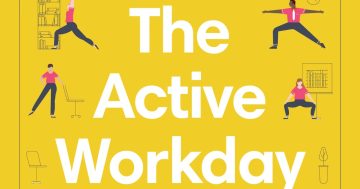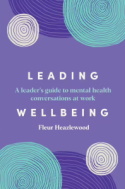
* Fleur Heazlewood creates healthy, high performing teams and organisations exploring the challenge of beating the burnout….
In our race for more, we are reducing ourselves to less.
And, for many of us, our health and wellbeing is the ‘less’, and the ‘more’ is an endless cycle of busyness, pursuit, and stress.
We are under pressure from economic and financial uncertainty on top of exhaustion from the pandemic and other external events are contributing to high levels of chronic stress, burnout, and mental health issues across the globe.
Each of these conditions drains our energy, engagement, and ability to function well.
We are wired and over-tired. Our busy lifestyles are keeping us in a constant fight-or-flight state.
When we are stressed and in survival mode, we can’t perform well. Our brain prioritises the resources needed to keep us safe from risks and threats and deprioritises functions less essential to survival like perspective-taking, problem-solving and innovation.
There is no such thing as work-life balance.
Many of us still operate with an industrial age model of work which focuses on and measures success by effort, productivity, and targets. Where we prioritise work first, and then fit health, wellbeing, rest, and recovery into whatever time is left.
The story we tell ourselves sounds something like this, ‘if I work hard and achieve my targets, I then deserve happiness and can then take some time for wellbeing.’ But this work-life balance equation is broken and backwards.
Many people describe themselves as ‘burnt out’ when what they really mean is ‘exhausted’. So, let’s take a moment to properly define it. The World Health Organization classifies burnout as a syndrome ‘resulting from chronic workplace stress that has not been successfully managed’.
There are three components to burnout:
- Energy depletion or exhaustion: mental, emotional, and physical;
- Distancing or disconnection: this may look like mental disengagement, cynicism, apathy, or negativity;
- Reduced performance: a loss of productivity and effectiveness, you are not getting things done in the way or at the speed and quality you usually would.
A popular misconception is that time off and a long holiday will reverse burnout. It won’t. We need to make healthier choices about our work environment and the ways we will and won’t work.
Better wellbeing starts with better prioritisation.
Over 10-years of research shows that when we prioritise wellbeing and happiness first, we have better performance, sales, creativity, relationships, and resilience, and less burnout. We not only feel better, but we experience a performance advantage.
Imagine you are trying to fit a mix of big rocks, pebbles, and sand into an empty jar. If you start filling the jar by first adding the sand and then the pebbles, you will not have room for your rocks. The big rocks symbolise the things that are the most important in your life.
Your health, your wellbeing, your family and friends. Even if everything was lost and only they remained, your life would still have meaning.
The pebbles represent the things in your life that are meaningful and matter but are not as critical, such as your work, home, and hobbies. Then the sand is everything else, the fillers, the small stuff: material possessions, chores, watching television, or scrolling through social media feeds. Your big rocks are your guiding compass for your choices when you’re faced with conflicting demands.
Beating burnout is about boundaries.
Most of us know what the foundations for positive health are.
Things like safety, regular exercise, nourishing nutrition, social support, and sufficient sleep. However, too often we get caught up in a busyness treadmill, continuously rushed for time, and not getting through our never-ending to-do-lists.
A lack of clarity about priorities leads to weak boundaries and willpower. Working back late on a once-off project to finish a report becomes a pattern of working back late.
Forgoing personal exercise time to ferry the kids to extra sporting activities becomes a pattern of deprioritising our fitness. And so on.
Boundary management involves making choices and being deliberate about the trade-offs.
It means being specific about what you will do, and also being specific about what you won’t do. Be specific.
What are your non-negotiables? What will you be flexible with?
5 tips for preventing burnout.
- Be clear on what your top 2-3 life priorities are.
- Invest in wellbeing as your enabler, not your reward for performance.
- Get clarity and alignment on what your top 2-3 work priorities are.
- Negotiate with time, resources, and supports when there are conflicting demands.
- Say no.
* Fleur Heazlewood is an author of Leading Wellbeing – A leaders conversation guide to mental health mastery at work, is a leadership expert, speaker, and founder of the Blueberry Institute. She has trained over 3,000 leaders in mental health mastery, future-fit resilience, and positive leadership skills.
This article first appeared on Flyingsolo.











